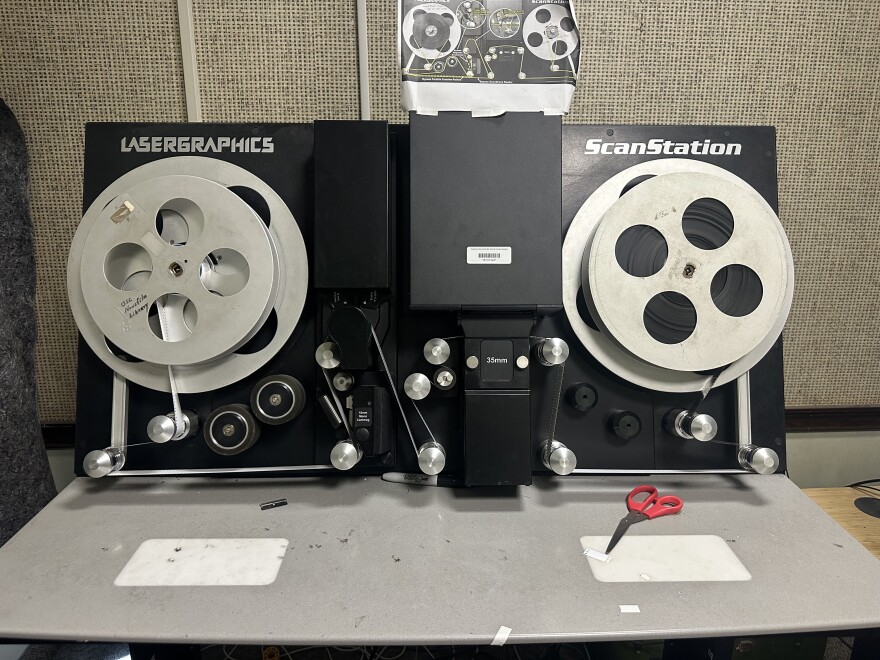In an unassuming building on the outskirts of the University of South Carolina’s campus is one of the largest motion picture archives in the United States.
The Moving Image Research Collections (MIRC) is an archive that preserves all kinds of videos from home movies to local TV reels, but the highlight is the Fox Movietone Collection.
The Movietone Collection is a group of film reels that were shot when Fox Film Corporation, later known as Twentieth Century Fox, recorded footage all over the world in the early to mid 1900s.
This is footage from the collection of a Japanese Komusō Priest playing a bamboo flute. It was shot in 1929.
This is one of the first recordings of the Welsh language, also from 1929.
The Fox Movietone Collection contains about 11 million feet of film, with a mixture of silent and sound newsreels.
There’s footage of Pearl Harbor, Martin Luther King Jr., even someone wrestling a lion. And that’s just the tip of the iceberg.
“It’s really a treasure. A national treasure and an international treasure,” said MIRC director Daniela Currò.
She said the archive was founded when Twentieth Century Fox donated their collection of newsreels to USC in 1980, which is unlikely to happen again.
That’s because studios now keep all their old footage to make money off relicensing. At the time, the films just took up space.
“They were happy to give it to others,” Currò said.
While USC may seem like an odd choice for such a donation, there was already a connection between Fox and South Carolina.
In the 1970s, SCETV produced a show with Lowell Thomas, the voice of the Fox newsreels.
A producer on the show put Fox in touch with USC, and eventually, the Fox Movietone Collection was donated.
Now, technicians at the MIRC work on digitizing films, converting video from film reel to a digital format.
In Library Manager Laura Major’s office, there is a huge film scanning machine in the corner.

There are two huge film reels on either side, and the film travels between different knobs and wheels as the machine transfers what’s on the film to Major’s computer.
From there, she works to combat any decay, digitizing the most at-risk films before they become unwatchable.
“Some films will take you ten days and others will take you ten minutes,” Major said.
Film Technician Benjamin Rubin takes a lot of pride in the job.
“This is something that is older than me, older than anyone I know,” he said. “That it’s somehow passed down through the years and remains relatively intact is nothing short of a miracle.”
And the MIRC does more than preserve these films, it presents them to the public.
Regional Film Curator Lydia Pappas will screen old footage of SC towns, offering current residents a glimpse into the past.
For example, this footage of Downtown Orangeburg from 1935 was shown a few years ago.
Pappas encourages people to participate in the screenings.
“You need to shout at the screen and say, ‘Oh! I know that guy, he used to go out with my grandma,’" she said, laughing. "People don’t know they have this information until they see it."
Pappas has also visited towns with rich histories like Bennettsville, where the footage she shows can inspire current residents.
“It’s now a very small rural town, but at that time, it was quite bustling,” she said. “People in these towns are also trying to renovate them and reinvigorate them… to try and almost get back to that.”
The MIRC’s footage is not just useful for tracing the history of South Carolina, but America as a whole.
Documentary Filmmaker Bill Morrison works extensively with the collection.
“The footage from 100 years ago… tells a uniquely American story, and America really at a crossroads,” Morrison said.
“I think if we’re to understand how there can be any progressive change in this country, we have to see how these patterns keep recurring,” he added.
The films at the Moving Image Research Collections are kept in a walk-in freezer, similar to something found in a restaurant.

Except it’s about ten times bigger.
It’s hard to describe the sheer amount of films the MIRC holds, but sometimes, Morrison finds films in the collections that still have not been digitized.
“Maybe nobody’s ever looked at this film ever, and it’s sitting there in this incredible treasure trove of images that have been captured but not looked at,” he said.
Through the millions of feet of film at the MIRC, each reel tells a different story.
MIRC Director Daniela Currò compared it to science fiction.
“It’s really a way of traveling in space and in time,” she said. “We get to a world that doesn’t exist anymore, but still speaks to us.”
She said she hopes to share that world with everyone.










